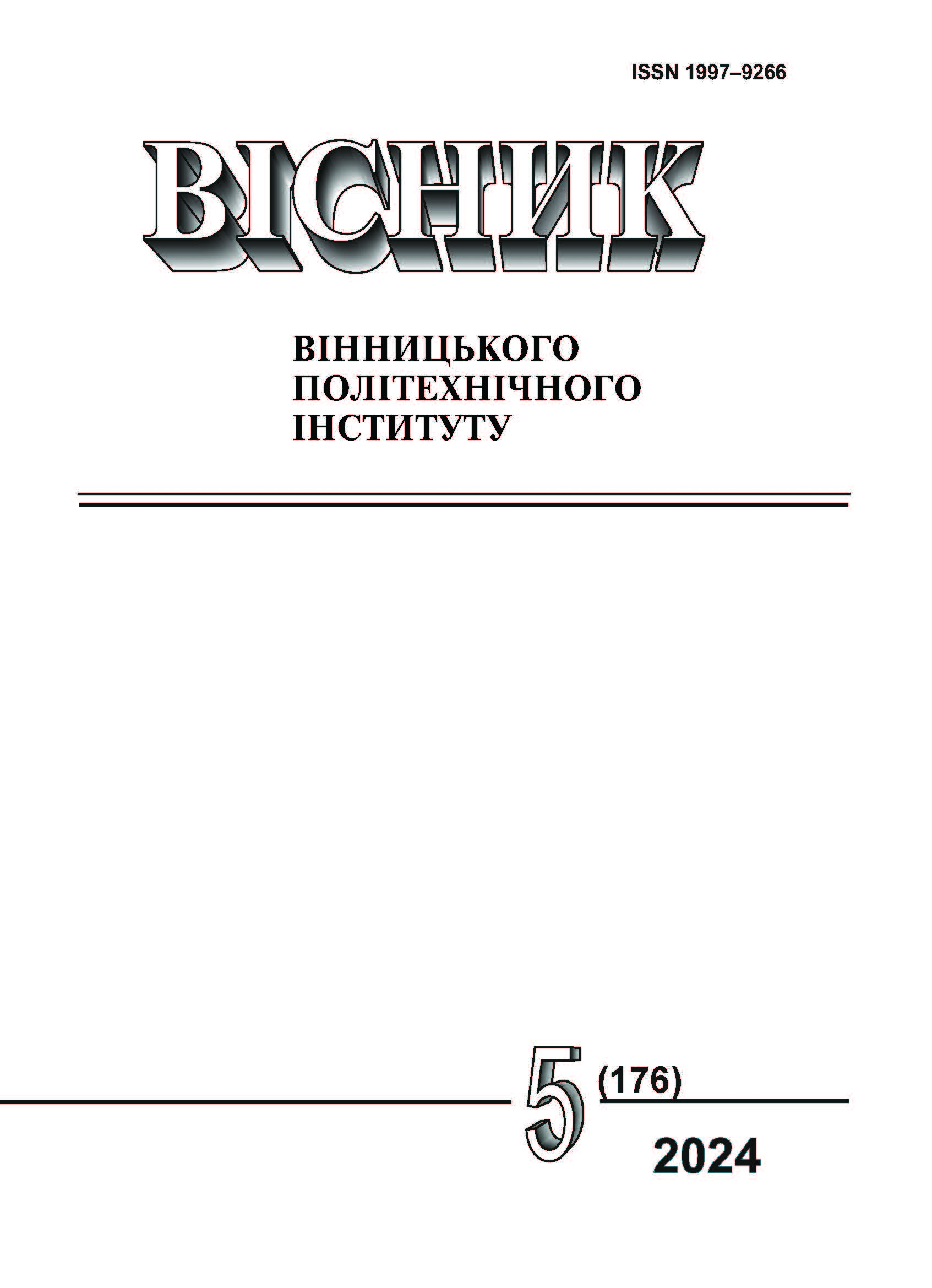Industry 4.0 & Education 4.0 Concepts and Challenges for Topics of Thesis of Automobile Engineers
DOI:
https://doi.org/10.31649/1997-9266-2024-176-5-40-47Keywords:
Industry 4.0, Education 4.0, CAD/CAE/CAM systems, remote engineering laboratories, virtual realityAbstract
Education in Ukraine faces many challenges. This is a rapid technological progress that changes both subjects of study and educational technologies. The war forced teachers and students to master all forms of distance and blended learning. Distance education and new technologies have made digitization the main trend of modern education. On the one hand, the percentage of students who want to get higher education has increased; on the other hand, there is fierce competition between universities for applicants, which encourages the search for more modern and attractive educational programs. Part of the students is abroad and considers the proposed educational programs through the prism of employment in foreign companies. All these challenges can be taken into account integrally, if you compare the topic of diploma design with the main areas of Industry 4.0 and Education 4.0. The development of industry takes place in the direction of expanding the use of computers, technologies, electronic devices and taking into account the psychological characteristics of a person. Self-driving electric cars are being used. Driving the car taking into account the real road situation is carried out with the help of artificial intelligence. In some cases, the car can be controlled remotely in accordance with the ideology of the Internet of Things. Such a car can be considered as a mobile robot. These innovations are difficult to implement in the subject of diploma design in the field of knowledge Mechanical Engineering. A certain area has been found that enables to connect the topic of diploma design with part of the Industry 4.0 directions. These are CAD/CAE/CAM systems that are part of Industry 3.0, but have acquired a different meaning. Online CAE services implement the idea of remote engineering laboratories. CAD and CAM are components of reverse engineering and are necessary for 3D-printing technology. The development of CAD turned drawings of nodes and parts into objects of virtual reality.
References
Я. Степчин, і О. Мельник, «Методичні рекомендації для підготовки, виконання та захисту бакалаврських кваліфікаційних робіт,» Державний університет «Житомирська політехніка», 2021, с. 38. https://learn.ztu.edu.ua/course/view.php?id=1853 .
C. Guerin, H. Kerr, and I. Green, “Supervision pedagogies: Narratives from the field,” Teaching in Higher Education, vol. 20 (1), pp. 107-118, 2015. https://doi.org/10.1080/13562517.2014.957271 .
M. Hernandez-de-Menendez, C. Escobar Díaz, and R. Morales-Menendez, “Engineering education for smart 4.0 technology: a review,” International Journal on Interactive Design and Manufacturing (IJIDeM), vol. 14 pp. 789-803, 2020. https://doi.org/10.1007/s12008-020-00672-x .
R. Ramirez-Mendoza, R. Morales-Menendez, H. Iqbal, H., and R. Parra-Saldivar, “Engineering Education 4.0: —proposal for a new Curricula,” in 2018 IEEE Global Engineering Education Conference (EDUCON), 2018, pp. 1273-1282. https://doi.org/10.1109/EDUCON.2018.8363376 .
M. Elbestawi, D. Centea, I. Singh, and T. Wanyama, “SEPT learning factory for industry 4.0 education and applied research,” Procedia manufacturing, vol. 23, pp. 249-254, 2018. https://doi.org/10.1016/j.promfg.2018.04.025 .
Н. Фідровська, С. Ковалевський, і О. Олейнікова, «Дипломне проєктування: методичні вказівки для студентів першого (бакалаврського) рівня вищої освіти галузі знань 13 – Механічна інженерія: спеціальності 133 Галузеве машинобудування,» Харкiв. нац. автомоб.-дор. ун-т., Харкiв, 2023, с. 36. https://dspace.khadi.kharkov.ua/handle/123456789/12201 .
Н. Хомик, М. Сташків, і В. Олексюк, «Методичний посібник до виконання дипломної роботи для здобуття освітнього ступеня «магістр» для студентів денної та заочної форм навчання спеціальності 133 «Галузеве машинобудування» з орієнтацією на спеціалізацію «Машини сільськогосподарського виробництва»,» Тернопіль: ФОП Паляниця В. А., 2018, с. 164. [Електронний ресурс]. Режим доступу: http://elartu.tntu.edu.ua/handle/lib/24775 .
А. Головчук, «Методичні вказівки до виконання та захисту магістерських робіт для студентів спеціальності 133 "Галузеве машинобудування" («Колісні та гусеничні транспортні засоби») освітнього ступеня «магістр» усіх форм навчання, » Запоріжжя: ЗНТУ, 2017, с. 26. https://eir.zp.edu.ua/server/api/core/bitstreams/d612434b-fd8a-47bb-b0b6-9ebc059a8826/content .
A. S. Souza, and L. Debs, “Concepts, innovative technologies, learning approaches and trend topics in education 4.0: A scoping literature review,” Social Sciences & Humanities Open, vol. 9, no. 100902, 2024. https://doi.org/10.1016/j.ssaho.2024.100902 .
E. Mukul, and G. Büyüközkan, “Digital transformation in education: A systematic review of education 4.0,” Technological forecasting and social change, vol. 194, no 122664, 2023. https://doi.org/10.1016/j.techfore.2023.122664 .
O. Hurman, and A. Kviatkovska, “The impact of industry 4.0 on the modern world educational process and in Ukraine,” Scientific Journal of Polonia University, no. 59(4), pp. 23-2, 2023. [Electronic resource]. Available: http://pnap.ap.edu.pl/index.php/pnap/article/view/1163 .
M. Ciolacu, B. Mihailescu, T. Rachbauer, C. Hansen, C. Amza, and P. Svasta, “Fostering engineering education 4.0 paradigm facing the pandemic and VUCA world,” Procedia Computer Science, vol. 217, pp. 177-186, 2023. https://doi.org/10.1016/j.procs.2022.12.213 .
V. Ivanov, L. Dimitrov, S. Ivanova, and G. Urum, “Industry 4.0 Approaches to the Standardization of Spur Bevel Gears,” in International Conference “New Technologies, Development and Applications”, Lecture Notes in Networks and Systems, vol. 1069, pp. 443-451, 2024. https://doi.org/10.1007/978-3-031-66268-3_45 .
V. Ivanov, L. Dimitrov, S. Ivanova, and M. Volkova, “Reverse engineering in the remanufacturing: metrology, project management, redesign,” in New Technologies, Development and Applications, International Conference, Lecture Notes in Networks and Systems, vol. 233, pp. 169-176, 2021. https://doi.org/10.1007/978-3-030-75275-0_20 2021 .
Downloads
-
PDF (Українська)
Downloads: 81
Published
How to Cite
Issue
Section
License

This work is licensed under a Creative Commons Attribution 4.0 International License.
Authors who publish with this journal agree to the following terms:
- Authors retain copyright and grant the journal right of first publication.
- Authors are able to enter into separate, additional contractual arrangements for the non-exclusive distribution of the journal's published version of the work (e.g., post it to an institutional repository or publish it in a book), with an acknowledgment of its initial publication in this journal.
- Authors are permitted and encouraged to post their work online (e.g., in institutional repositories or on their website) prior to and during the submission process, as it can lead to productive exchanges, as well as earlier and greater citation of published work (See The Effect of Open Access).





